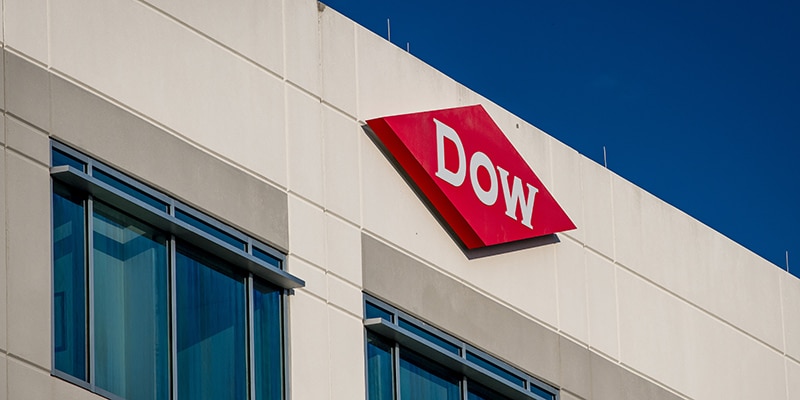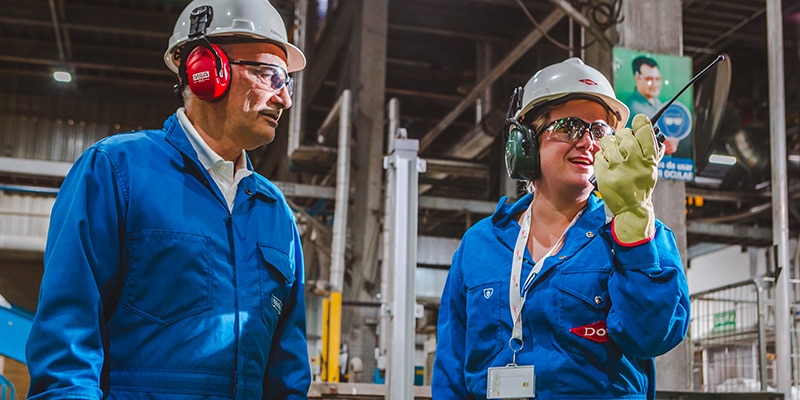
The Dow Idea Factory & Grebe Rule
Turning crazy concepts into groundbreaking innovations
During the Great Depression when many companies cut back on research, Dow continued to expand its investments. Under the leadership of John J. Grebe, the Physics Laboratory at Dow’s headquarters in Midland, Michigan, became known as “an idea factory.”
The Grebe Rule
Long before Google famously encouraged its employees to spend 20 percent of their time on innovation, Dow’s John J. Grebe built an innovation factory in what became known as the Physics Laboratory. Over a 20-year span beginning in the mid-1920s, the Physics Lab was responsible for a long list of innovations, which laid the base of knowledge for product lines that remain key markets for Dow decades later. These products included a range of chemistries for the agricultural, pharmaceutical, water purification, building, energy and automotive industries.
“Ideas have a way of cropping up suddenly but never unexpectedly. They rarely arrive until you are thoroughly prepared to receive them – even, sometimes, after you have grown weary waiting for them.”
– John J. Grebe
Under John’s direction, the Physics Lab became a place where ideas were nurtured and shared, and where employees were given free rein to spend 10 percent of their time on projects or ideas they preferred. Known as “the Grebe rule,” the practice produced breakthrough innovations such as the SARAN™ resin and Saran Wrap™ plastic wrap family of products.
“Ideas,” said John, “have a way of cropping up suddenly but never unexpectedly. They rarely arrive until you are thoroughly prepared to receive them – even, sometimes, after you have grown weary waiting for them. When you have explored and probed and tested and studied and discarded, then click! It is often as if they come from outside the mind when you have become, in a sense, prepared and strong enough to grasp them.”
The “Idea Man” Finds His Home
Dow’s founder, Herbert Henry Dow, first met John in 1924 at the Case School of Applied Science. Herbert had returned to his alma mater to claim an honorary doctorate’s degree. A chemistry professor told Herbert that John, a physics student, was an original thinker and top of his class. Herbert immediately sought him out and hired him.
John, born Hans Josef Grebe (rhymes with Phoebe), immigrated to the United States from Germany in 1914. His father, a machinist and farmer, was nervous that a war was coming and sent John to live with an uncle. When the war did break out, his teachers at Cleveland’s East Technical High School changed his name to John. He quickly mastered English and eventually graduated as class valedictorian.
Like Herbert, John was an idea man. Recognizing this, Herbert gave John the freedom to innovate from his earliest days. Instead of assigning John projects, Herbert asked him, “What is it that you would like to do?” After his first summer in Midland, John began working without supervision and reported directly to Herbert. One of his first projects was to work on ideas for converting batch processes to continuous ones. In the next 40 years, his work would help establish Dow as a leader in automated chemical production.
The Most Peculiar Laboratory
John’s laboratory was quite different than others at Dow. He used a multidisciplinary approach and had all sorts of specialists work together, ensuring that his team members each contributed a different expertise. “Idea cards” were required to promote open discussion and awareness of what other researchers were working on – anyone with an idea needed to write it down on a card, sign and date it, and then pin it to the bulletin board to be discussed. He even carefully thought through the physical layout of the laboratory space to encourage open dialogue, making sure his team members had to walk past their colleagues to get anywhere.
“I find talking over a project with others enhances its value, develops its progress more swiftly, focuses light on obscure aspects,” he said. “No mere man should walk alone among ideas.”
A “Creative Explosion”
In 1930, when Willard H. Dow succeeded H.H. Dow as president after his father’s death, Willard continued to give Grebe and his researchers the same autonomy. In fact, during the depths of the Great Depression, when many other chemical companies were cutting back on research, Dow continued to expand its investment in R&D. As a result, John was able to staff his Physics Lab with the best and brightest from top universities.
The 20 years that John led the Physics Laboratory would be known as a “creative explosion.” Styron™ polystyrene resins would become Dow’s number-one selling item for 50 years, and it opened the door to the age of plastics. Other noteworthy inventions from the Physics Laboratory include STYROFOAM™ brand extruded polystyrene, DOWTHERM™ heat transfer fluids, waste disposal bacteria, and the process of extracting bromine and magnesium from seawater.
Today, Dow’s growth continues to be fueled by the innovative ideas of more than 7,000-plus men and women scientists – working on everything from affordable, energy-efficient buildings in China and Latin America … to more abundant and safer food in India and the United States … to accessible, pure water in Africa and Saudi Arabia … to lightweight, eco-friendly transportation in Europe. Dow still encourages its researchers to think differently, as it is only by tapping into their innate curiosity and creativity today that we will develop the solutions to tomorrow’s complex global challenges.
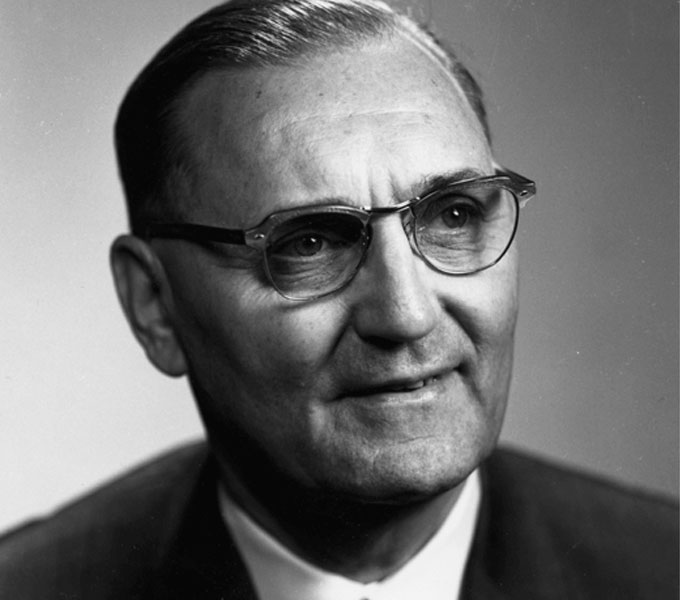
John J. Grebe, 1963
Photo credit: Dow Chemical Historical Image Collection, Chemical Heritage Foundation Archives
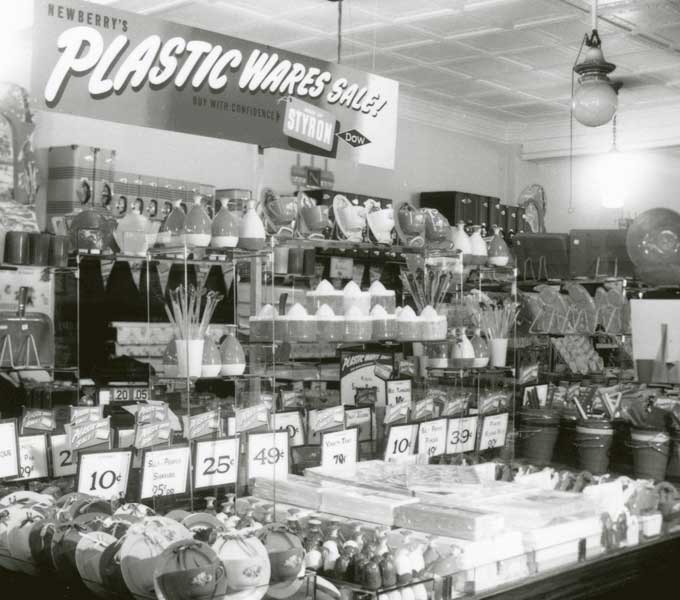
Display of Styron Plastic Wares, circa 1949
Photo credit: Dow Chemical Historical Image Collection, Chemical Heritage Foundation Archives
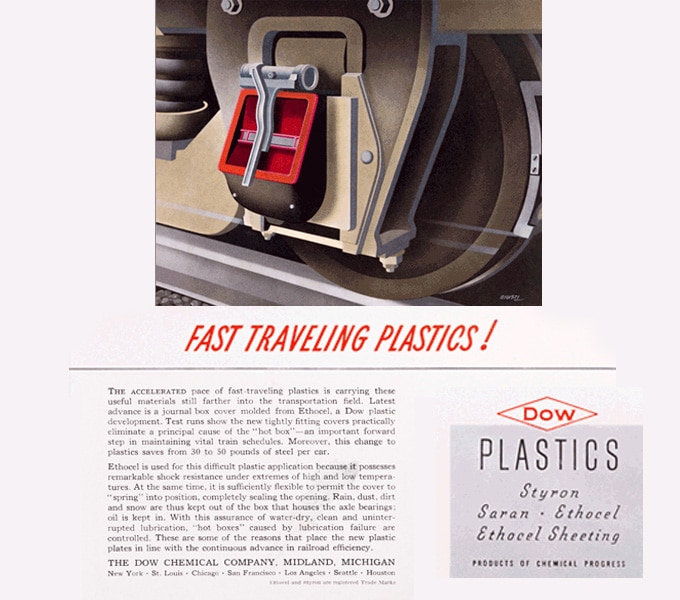
Vintage Dow Plastics Ad, circa 1942
Contact us
Have a question or need more information about Dow Corporate? We have multiple ways to help you get the answers you need.



